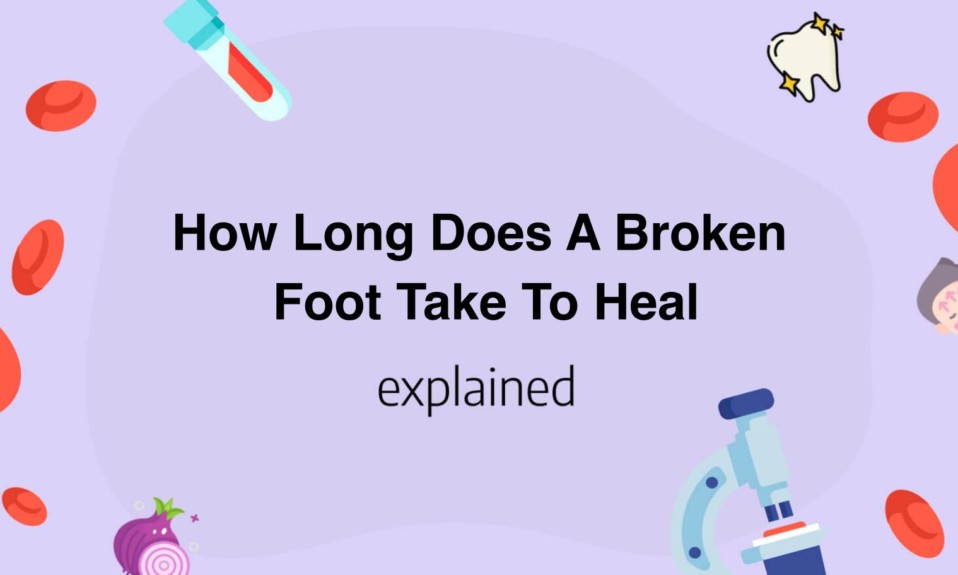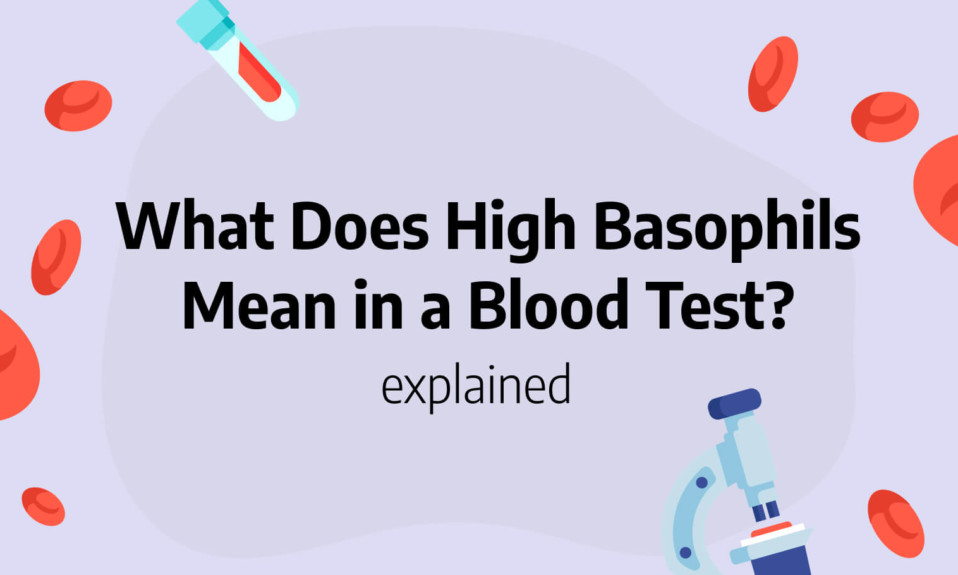A broken foot can be a significant and painful injury that can disrupt daily life.
One of the most common questions asked by people with a broken foot is, “how long does it take to heal?” The recovery time can vary depending on several factors, such as the severity of the fracture, age, and overall health.
In this article, we will explore the healing process of a broken foot and provide insight into what you can do to aid the healing process.
- A broken foot typically takes 6-8 weeks to heal, but may take longer depending on the severity of the injury.
- The healing process of a broken foot involves the formation of a callus, which is a hard bony tissue that helps to stabilize the fracture site.
- Rest, immobilization, and elevation of the affected foot are key to promoting healing, as is following a healthy diet to support bone formation.
- Physical therapy may also be recommended to help restore movement and strength to the affected foot.
- Pain and swelling can be managed with over-the-counter pain relievers and ice therapy.
How Long Does A Broken Foot Take To Heal
A broken foot is a fairly common injury, and healing time can vary depending on the severity of the fracture.
Small fractures may take only a few weeks to heal, but more serious fractures can take several months.
Generally, it takes around 6-8 weeks for a broken bone to heal, but the healing process can continue beyond that as the bone continues to strengthen.
During the healing process, it is important to keep weight off of the affected foot and minimize movement to promote proper healing.
In some cases, a cast or brace may be necessary to immobilize the foot.
Pain management is also an important part of the healing process, and over-the-counter pain medication can help manage discomfort while the bone heals.
It is important to follow any instructions given by a medical professional and attend follow-up appointments to monitor healing progress.
In addition to proper rest and pain management, maintaining a healthy diet and staying hydrated can aid in the healing process.
Calcium and Vitamin D are important nutrients for bone health, so consuming foods like dairy products, leafy greens, and fortified cereals can be beneficial.
Smoking can also negatively impact bone healing, so quitting smoking may speed up the healing process.
Overall, the healing time for a broken foot can range from a few weeks to several months, depending on the severity of the fracture and how well care is taken during the healing process.
It is important to follow proper recovery protocol, attend follow-up appointments, and take steps to support overall health and wellness during the healing process.
Understanding Broken Foot Injuries and Healing Times
A broken foot can be a frustrating injury to deal with as it can significantly limit mobility and daily activities.
The healing time for a broken foot can vary depending on the severity of the injury and the course of treatment taken.
Generally speaking, it can take anywhere from 6-12 weeks for a broken foot to heal completely.
However, this timeframe can extend or shorten depending on various factors.
If a stress fracture or hairline fracture is present, it may only take a few weeks to heal with proper rest and immobilization.
On the other hand, if the broken bones have shifted significantly and require surgery or an external fixation device, the healing process may be longer.
Additionally, existing medical conditions such as diabetes can slow down the healing process.
During the healing period, it is important to follow the doctor’s instructions closely.
This may include the use of crutches for mobility, wearing a cast or boot, and keeping weight off the affected foot.
Physical therapy and gentle exercises may also be recommended to rebuild strength and flexibility in the foot.
It is crucial to give the injured foot ample time to heal.
Attempting to rush the process or not following medical advice can result in a longer healing time or worse complications.
A broken foot can also increase the risk of developing osteoporosis in the future, so it is essential to take measures to prevent future injuries.
This includes maintaining a healthy diet rich in vitamin D and calcium, staying active, and wearing proper footwear.
In conclusion, a broken foot can take several weeks to heal completely, and this timeframe can vary depending on the severity of the injury and the course of treatment taken.
Following medical advice, allowing ample time for healing, and taking preventative measures can help ensure a full recovery and reduce the risk of future injuries.
Factors that Affect Broken Foot Healing Times
There are several factors that can influence the healing time of a broken foot.
First and foremost, the severity of the fracture plays a critical role in the healing process.
Simple fractures, such as hairline cracks, require less recovery time and may heal faster than more complex fractures, such as displaced or comminuted breaks.
The location of the fracture can also impact healing time; fractures closer to the toes may heal faster because there is more blood supply in that area.
Age is another important factor to consider, as younger patients usually heal faster due to higher bone metabolism and better blood supply.
The presence of underlying health conditions, such as diabetes or osteoporosis, can slow down the healing process and increase the risk of complications.
Poor nutrition and vitamin deficiencies can also prolong the recovery time, as the body needs essential nutrients to build new bone tissue.
Smoking is another detrimental factor that can delay healing and increase the risk of infection, as it constricts blood vessels and limits the supply of oxygen and nutrients to the injured area.
The treatment plan prescribed by the doctor can also affect the healing time.
A cast or brace may be required to immobilize and protect the injured foot, but keeping the injured area immobilized for too long can lead to muscle atrophy and stiffness, prolonging the recovery time.
Physical therapy can help maintain muscle strength and flexibility while the bone is healing, but engaging in high-impact activities too soon can also impede the recovery process.
In summary, several factors can impact the healing time of a broken foot, including the severity and location of the fracture, age, underlying health conditions, nutrition, smoking, and the treatment plan.
It’s essential to follow the doctor’s instructions and advice and allow the body enough time to heal fully before returning to normal activities.

Signs Your Broken Foot Is Healing Properly
Swelling, pain, and difficulty walking are common signs of a broken foot, but how do you know if your foot is healing properly? First, it’s essential to follow your doctor’s instructions – compliance with your treatment plan is crucial for healing.
You may also notice some positive changes in your foot as it heals, such as decreased pain and swelling.
Gradually increasing mobility is another sign, especially if you can walk farther distances without pain.
However, it’s important to note that healing can vary depending on the severity of the injury.
For example, if you had surgery, the incision should start healing and scabbing over.
In some cases, your physician may recommend physical therapy or rehabilitation exercises to improve your range of motion and strength.
This process may take several weeks to several months depending on your injury.
Another positive sign of proper healing is the ability to bear weight on the affected foot.
Initially, you may use crutches to relieve pressure on the foot, but as the injury heals, you can typically put more weight on it.
Gradually adding weight and returning to normal activities will depend on the type and location of the broken bone.
If you experience discomfort while putting weight on the foot, consult with your doctor.
Finally, X-rays may show that the bone is fusing back together and that there is new bone growth, especially if you needed surgery.
This is a clear indication that your foot is healing properly, and that you’re on the right track for a full recovery.
Remember, proper healing takes time and patience – don’t rush the process, and always consult with your doctor if you have any concerns or experience any setbacks.
By following your treatment plan and recognizing positive signs of healing, you can make a full recovery and get back to your daily activities.
Read also: How Long Do Damaged Nerves Take To Heal
Common Treatments for Broken Foot Injuries
Broken foot injuries are common and can be caused by various factors like accidents, falls, or sports injuries.
Although the severity of the injury may vary, it is essential to seek medical attention as soon as possible.
Once diagnosed with a broken foot, there are several treatments available for the patient.
The first treatment for a broken foot injury is immobilization.
Immobilizing the affected foot with a brace, cast, or splint is essential to ensure that the bones heal correctly.
The immobilization period may vary depending on the severity of the injury, and the patient may have to use crutches or a wheelchair to move around during this time.
Another common treatment for a broken foot injury is rest.
Resting the affected foot is essential to allow the bones to heal naturally.
Patients should avoid putting pressure on their affected foot and refrain from any physical activity that may cause further damage.
Sometimes, doctors may prescribe pain medication to manage the pain associated with a broken foot injury.
Painkillers like acetaminophen or ibuprofen can help alleviate pain and inflammation.
Additionally, for more severe pain, prescription painkillers like codeine or morphine may be prescribed.
In some cases, the doctor may suggest surgery.
This typically occurs when the bones are broken in multiple places, and the patient cannot bear weight on their affected foot.
In these instances, surgery can help repair and stabilize the broken bones.
The recovery process involves immobilization, rest, and physical therapy to regain strength and flexibility.
In conclusion, there are several treatments available for a broken foot injury, including immobilization, rest, pain management, and surgery.
Seeking medical attention as soon as possible is essential to ensure proper diagnosis and treatment.
With the right treatment plan and care, most patients can fully recover from a broken foot injury and return to their normal lives.
Read also: What Is The Fastest Way To Heal A Broken Shoulder
Tips for Speeding Up Broken Foot Healing
Ice, rest, and elevation are crucial for healing a broken foot, but there are additional tips to speed up the process.
Proper nutrition is essential for bone growth and repair.
Eating foods rich in calcium and vitamin D such as dairy products, leafy greens, and fish can aid in bone regeneration.
Quit smoking if you smoke cigarettes, as nicotine impairs blood flow, making it harder for bones to heal.
Compression socks or wraps can help reduce swelling, which may speed up healing time.
Low-impact exercises such as cycling or swimming can improve circulation and strengthen muscles without placing too much pressure on the broken foot.
Physical therapy can also be beneficial in the healing process, as it helps improve range of motion and strengthens the affected area.
Lastly, avoid alcohol as it can disrupt sleep quality and slow down the healing process.
While it is important to consider the tips mentioned above, it is equally important to be patient during the healing process.
Rushing the healing process by putting weight on the foot too soon can lead to further injury and setbacks.
Always consult with a doctor before trying any new remedies, as every injury is different and requires individualized care.
By following these tips and being patient, one can ensure a quicker and more successful recovery from a broken foot.
You’ll also like:










